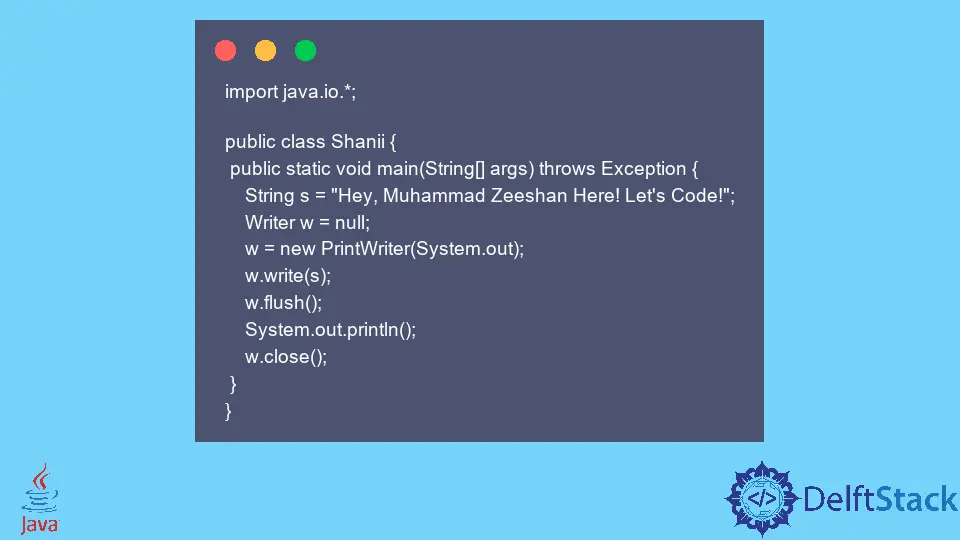How to Use of the flush() Method in Java Streams
-
Understanding the
flush()Method - Using flush() in PrintWriter
- Using flush() with BufferedOutputStream
- The Importance of flush() in Network Programming
- Conclusion
- FAQ

Java Streams are a powerful feature that allows developers to process sequences of elements in a functional style. Among the various methods offered by the Stream API, the flush() method plays a crucial role in ensuring that data is written out to the output stream.
In this article, we will explore the function of the flush() method in Java Streams, its primary purpose, and how it can be effectively utilized in your applications. Whether you are a seasoned Java developer or a beginner, understanding the flush() method can enhance your ability to manage data output efficiently.
Understanding the flush() Method
The flush() method is primarily used in the context of output streams. Its main purpose is to clear the output buffer, ensuring that any data that has been buffered is actually written out to the destination. In Java, when you write data to an output stream, it often gets stored in a buffer temporarily. This buffering improves performance by reducing the number of write operations. However, there are times when you need to ensure that the data is immediately sent to the output, and that’s where flush() comes into play.
When you call flush(), it forces the output stream to write any buffered data to the underlying device, such as a file or network socket. This is particularly important in scenarios where timely data transmission is critical, such as in real-time applications or when writing logs. Without calling flush(), you might end up with stale data or incomplete writes, leading to potential issues in your application.
Using flush() in PrintWriter
One common use case for the flush() method is with the PrintWriter class, which is commonly used for writing character data to a text output stream. Here’s how you can use flush() effectively with PrintWriter.
import java.io.PrintWriter;
public class FlushExample {
public static void main(String[] args) {
try (PrintWriter writer = new PrintWriter("output.txt")) {
writer.println("Hello, World!");
writer.flush();
} catch (Exception e) {
e.printStackTrace();
}
}
}
In this example, we create an instance of PrintWriter that writes to a file named output.txt. After writing the string “Hello, World!” to the stream, we call the flush() method. This ensures that the data is written to the file immediately, rather than waiting for the stream to close. If we didn’t call flush(), the data might remain in the buffer and not be written to the file until the PrintWriter was closed, which could lead to data loss in case of an unexpected application shutdown.
Output:
Using flush() with BufferedOutputStream
Another scenario where flush() is essential is when using BufferedOutputStream. This class buffers output for performance reasons, and flushing the buffer ensures that all data is written out promptly.
import java.io.BufferedOutputStream;
import java.io.FileOutputStream;
public class BufferedFlushExample {
public static void main(String[] args) {
try (BufferedOutputStream bos = new BufferedOutputStream(new FileOutputStream("buffered_output.txt"))) {
String data = "Buffered Output Stream Example";
bos.write(data.getBytes());
bos.flush();
} catch (Exception e) {
e.printStackTrace();
}
}
}
In this code, we create a BufferedOutputStream that writes to buffered_output.txt. After writing a string of bytes to the stream, we call flush() to ensure that all buffered data is written out to the file. This is especially crucial when dealing with larger amounts of data, as it guarantees that everything is saved correctly and promptly.
Output:
The Importance of flush() in Network Programming
In network programming, the flush() method plays a vital role in ensuring that data is sent over the network without delay. When working with sockets, data can be buffered for efficiency, but this can lead to issues if the application requires immediate data transmission.
import java.io.PrintWriter;
import java.net.Socket;
public class NetworkFlushExample {
public static void main(String[] args) {
try (Socket socket = new Socket("localhost", 12345);
PrintWriter out = new PrintWriter(socket.getOutputStream())) {
out.println("Message to server");
out.flush();
} catch (Exception e) {
e.printStackTrace();
}
}
}
In this example, we establish a connection to a server using a socket. After sending a message to the server, we call flush() to ensure that the message is sent immediately. This is crucial in network applications where timing can be critical, such as in chat applications or real-time data feeds. Without flush(), the message might not reach the server in a timely manner, potentially causing delays or miscommunication.
Output:
Conclusion
The flush() method is an essential part of Java Streams, particularly when dealing with output streams like PrintWriter and BufferedOutputStream. It ensures that any buffered data is written out immediately, which is crucial for maintaining data integrity and timely communication in applications. Whether you are writing to a file or sending data over a network, understanding how and when to use flush() can significantly improve your Java programming skills and the performance of your applications.
FAQ
-
What does the
flush()method do in Java Streams?
Theflush()method forces the output stream to write any buffered data to the underlying device, ensuring immediate data transmission. -
When should I use flush() in my Java application?
You should use flush() when you need to ensure that data is written out immediately, especially in real-time applications or when writing logs. -
Is flush() necessary when closing an output stream?
While closing an output stream typically flushes the buffer, it’s good practice to call flush() explicitly before closing to ensure all data is written. -
Can I use flush() with all types of output streams?
Yes, flush() can be used with various output streams, including PrintWriter, BufferedOutputStream, and others that support buffering. -
What happens if I don’t call flush() before closing an output stream?
If you don’t call flush(), any buffered data may not be written out, leading to potential data loss or incomplete writes.
I have been working as a Flutter app developer for a year now. Firebase and SQLite have been crucial in the development of my android apps. I have experience with C#, Windows Form Based C#, C, Java, PHP on WampServer, and HTML/CSS on MYSQL, and I have authored articles on their theory and issue solving. I'm a senior in an undergraduate program for a bachelor's degree in Information Technology.
LinkedIn